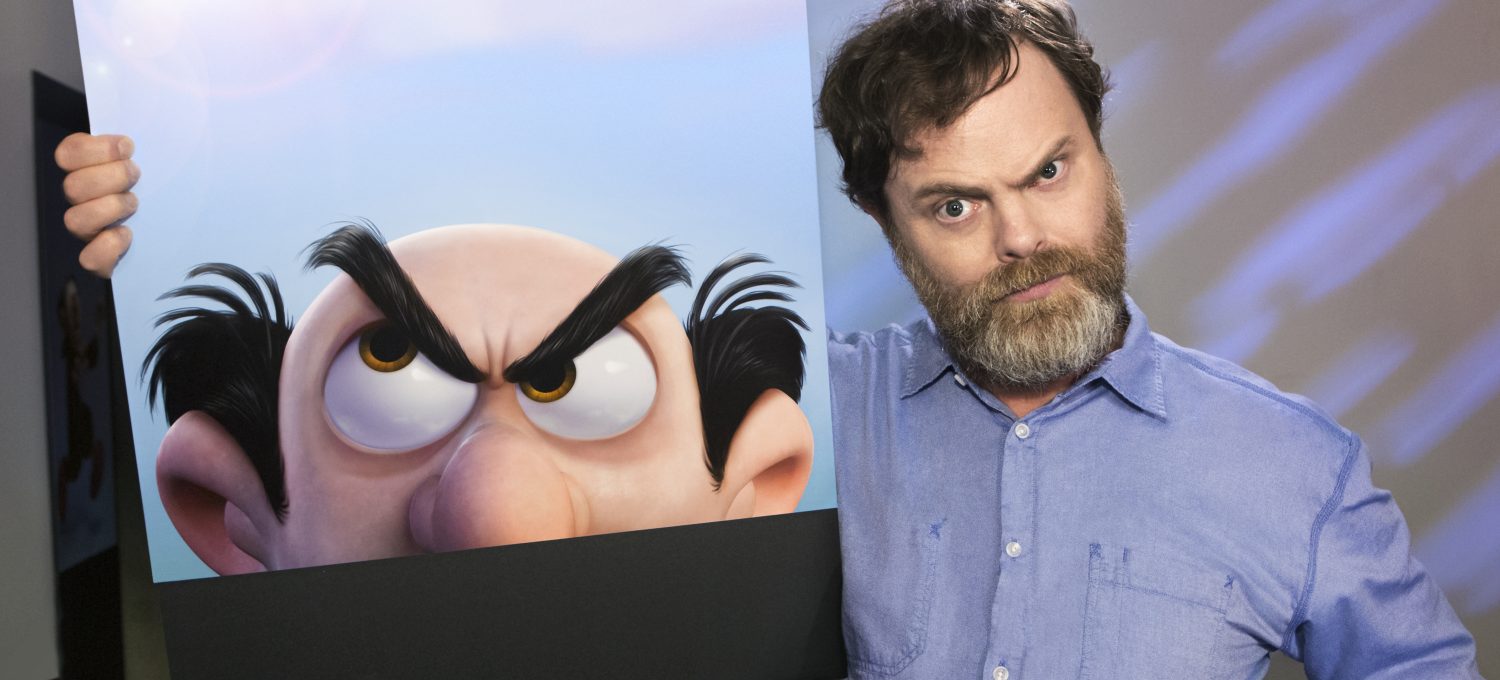The latest installment in the franchise, Smurfs: The Lost Village, releases this Friday. I had the chance to speak with Rainn Wilson, who voices the villain Gargamel, about the film and his thoughts on the intersections of faith and creativity.
In Smurfs: The Lost Village, a mysterious map sets Smurfette and her best friends on an exciting race through the Forbidden Forest to find a mysterious lost village before the evil wizard Gargamel does. While the film is arguably targeted to younger viewers, it manages to convey some important lessons for them, namely the idea of finding your identity through service to others and the power of love to call us into being our truest selves.
If you’ve never had the opportunity to hear him speak or haven’t read his book, The Bassoon King: My Life in Art, Faith, and Idiocy (which I highly recommend), then it might come as a surprise to you that Wilson is a man of deep faith and someone that thinks deeply about the intersections of spirituality, faith, and creativity. Read on for our conversation.
Pop Theology: Talk about your roll in the new Smurfs movie.
Rainn Wilson: I play the evil villain Gargamel. He’s out to smash and destroy and kill and eat all the Smurfs and suck up their magical powers.
PT: On the surface, the film is full of fun and adventure for younger viewers. But, when you approached the project, were there themes that resonated with you or that you hope families take away from the experience?
RW: There’s a lot of positive elements to the film. I like being a part of films that have a positive message, and the Smurfs is fun for the whole family. It’s really great for smaller kids, and there’s a lot of heart in it. It’s really about people finding themselves–finding their voice, finding their identity, coming together to work together, and building community. There’s a lot of beautiful spiritual ideals underlying the movie. But, mostly, it’s just a lot of fun.
PT: I’ve been an even bigger fan of yours since I heard you speak with Reza Aslan at All Saints Episcopal Church in Beverley Hills about faith and spirituality. Having read your book, it seems like one of those themes, finding our identities in service to others, is a key theme in your life. Can you say more about that?
RW: Wow, that’s a big transition from Gargamel to service in the community! But, yes. I’m a member of the Ba’hai faith, and the highest station in my religious faith is service to others and service to humanity, especially. It’s easy to be of service to your brother or sister, who you love and grew up with. It’s much harder to widen that net, to be of service to other people, that you don’t know–strangers, people from different cultures, people from different religions, or people with different skin color. So, I try and do that in my own limited way, with my work and outside of my work. I try to tell positive stories. That’s why we created Soul Pancake, to create positive, uplifting, inspiring stories that bring people together. My wife and I do work in Haiti with arts and literacy education with adolescent girls. So I think every human being has a two-fold purpose: one is to make yourself a better and better person, and the other is to try and help other people with what you do.
PT: And speaking of the work that you do at Soul Pancake, how have the tensions of the last several months impacted that? How are the situations we’re finding ourselves in shaping the work that you’re doing there?
RW: I think that what we’re seeing more and more is the worst of humanity–disunity, hatred, mistrust, and nationalism as opposed to internationalism. I think that these can be countered through trying to find points of commonality that bring people together, whether it’s from the Smurfs or the Soul Pancake videos.
PT: In your book, you talk about and really lament the separation of faith and creativity in our culture. Why is it necessary that we begin to mend that rupture?
RW: For me, the big realization was that they are one and the same thing. Being spiritual is being creative. They’re not two separate things. They’re one expression of what it is to be a human being. Being human means striving to transcend the mere material and our baser needs of food, sex, shelter, and social praise. Those are our more basic, animalistic needs. When we strive to rise above that, to transcend that, that’s our impulse towards creativity, towards creating things of beauty. It’s also our impulse towards trying to understand eternity, the Creator, what’s behind nature, and our purpose in this world. That’s all spirituality. It’s all one impulse. So, I think our culture has mistakenly separated those two.
PT: It seems like animation works really well, because lots of stories in that genre are deeply spiritual, especially around themes of identity and coming of age. And the genre itself, potentially, is one of the more creative and expressive fields in which to work. Have you seen other examples recently–in film, television, the arts–that bridge the gap?
RW: Some of the greatest movies of last year. There are filmmakers doing terrific work. I think Moonlight was a beautiful movie that worked both spiritually and aesthetically and had a tremendous amount of heart and compassion for its characters. Hidden Figures was another great film that was fun for the whole family–lively, entertaining, and really funny–while also dealing with some serious issues. There’s so many people doing great work out there. It’s up to Hollywood to keep greenlighting those pictures, and it’s up to ticket-buyers to keep buying the tickets for those movies and not just the next superhero movies.
PT: Thanks for taking the time and for your great work on and off the screen.
RW: Thank you!
